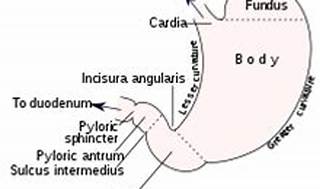A nurse is conducting discharge teaching to parents about the care of their infant after cardiac surgery. The nurse instructs the parents to notify the physician of what conditions occur. (Select all that apply.).
Respiratory rate of 36 breaths/minute at rest.
Appetite slowly increasing.
Temperature above 37.7° C (100° F).
New, frequent coughing.
Turning blue or bluer than normal.
Correct Answer : A,C,D,E
The correct answer is choices A, C, D, and E.
Choice A rationale:
A respiratory rate of 36 breaths/minute at rest is concerning in a pediatric client, as it may indicate respiratory distress or an underlying respiratory condition.
Choice B rationale:
An increasing appetite is generally a positive sign and not typically concerning unless accompanied by other symptoms.
Choice C rationale:
A temperature above 37.7° C (100° F) is concerning as it indicates fever, which could be a sign of infection or other medical conditions.
Choice D rationale:
New, frequent coughing is concerning as it may indicate respiratory infections, asthma, or other respiratory issues.
Choice E rationale:
Turning blue or bluer than normal (cyanosis) is a serious symptom indicating inadequate oxygenation and requires immediate medical attention.
Nursing Test Bank
Naxlex Comprehensive Predictor Exams
Related Questions
Correct Answer is ["A","D","E","F"]
Explanation
Choice A rationale:
A review of systems is essential in a health history because it helps in understanding the patient's overall health status and can reveal symptoms or issues that the patient might not consider significant. This information aids in making a comprehensive assessment.
Choice D rationale:
Height, weight, and BMI data are crucial parameters to assess a patient's nutritional status and overall health. These measurements help in identifying obesity, malnutrition, or other health-related issues.
Choice E rationale:
Diet and nutritional intake provide insights into the patient's eating habits, dietary restrictions, allergies, and potential deficiencies. This information is vital for assessing the patient's overall health and planning appropriate interventions.
Choice F rationale:
Family medical history is valuable as it helps in identifying genetic predispositions, hereditary diseases, and other health conditions that might run in the family. This information is crucial for understanding the patient's risk factors and developing a personalized healthcare plan. Choice B and C rationales: Physical assessment is indeed essential in healthcare, but it is not a part of the health history, which specifically focuses on the patient's past and current health status, medical conditions, medications, allergies, surgeries, and lifestyle habits. Similarly, a sexual history is important, especially for specific medical conditions, but it might not be relevant to every patient and might not always be included in the general health history.
Correct Answer is C
Explanation

Explore
The correct answer is choice C. Visible peristalsis and weight loss.
Choice A rationale:
Abdominal rigidity and pain on palpation are not typically indicative of pyloric stenosis. These symptoms could be associated with a variety of other gastrointestinal conditions.
Choice B rationale:
A rounded abdomen and hypoactive bowel sounds are not specific to pyloric stenosis. These symptoms could be seen in various gastrointestinal disorders.
Choice C rationale:
Visible peristalsis and weight loss are classic symptoms of pyloric stenosis. The condition causes a narrowing of the opening from the stomach to the small intestine, preventing food from passing through. This leads to vomiting after feeding, persistent hunger, and weight loss since very little food passes to the small intestines.
Choice D rationale:
Distention of the lower abdomen and constipation are not typically indicative of pyloric stenosis. These symptoms could be associated with a variety of other gastrointestinal conditions.
Whether you are a student looking to ace your exams or a practicing nurse seeking to enhance your expertise , our nursing education contents will empower you with the confidence and competence to make a difference in the lives of patients and become a respected leader in the healthcare field.
Visit Naxlex, invest in your future and unlock endless possibilities with our unparalleled nursing education contents today
Report Wrong Answer on the Current Question
Do you disagree with the answer? If yes, what is your expected answer? Explain.
Kindly be descriptive with the issue you are facing.
